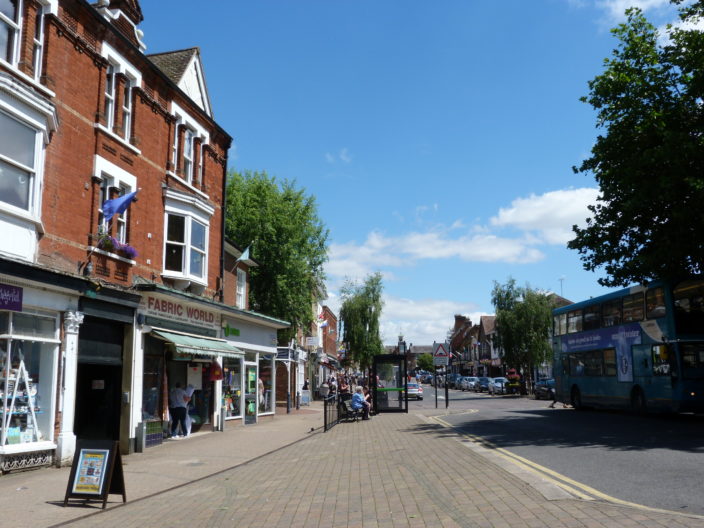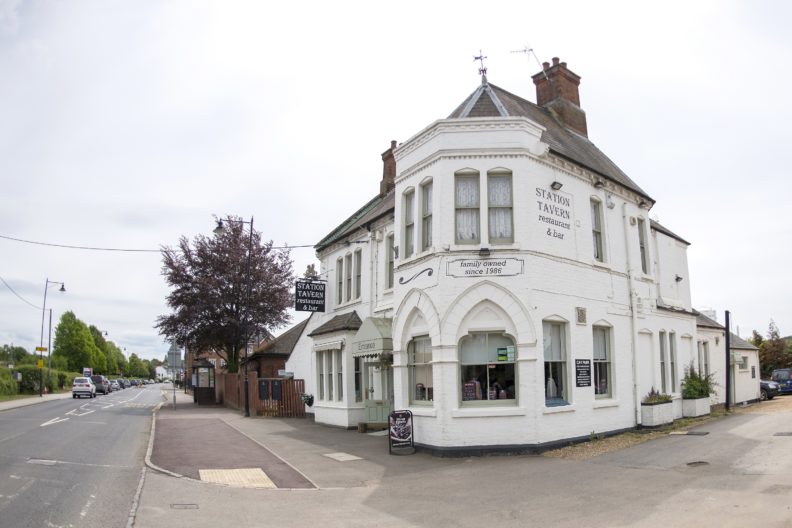Towns and villages

Experience the varied character of towns and villages across Greensand Country:
Ampthill — Ampthill has a rich history, a weekly market (Thursday) and plenty of places to shop, eat and drink. Much of Ampthill’s unique charm is owed to the former residents of Ampthill Park House: Lord Upper Ossory reorganised the layout of the Market Square, built the charming thatched Ossory Cottages and erected Katherine’s Cross.
Aspley Guise — Aspley Guise is a thriving village with an interesting history. From visitors coming to ‘take the air’ in the 19th century, to its role during the Second World War in hosting several top secret code-breaking facilities.

Ampthill town
Clophill — Clophill has a long history, including Old St Mary’s Church from Saxon times and the triple Motte and Bailey of Cainhoe Castle from Norman times. There is evidence of a Roman road running east-west through the village and in the Domesday Book of 1086, the village is called “Clopelle”.
Eversholt — For many years, most of the land in the village of Eversholt was owned by the Dukes of Bedford and the inhabitants worked on the Bedford estate.
Flitwick — A popular commuter town, Flitwick also offers an open-air market every Tuesday, selling local produce, and its famous Carnival in June.
Gamlingay — At the eastern end of the Greensand Ridge Walk, Gamlingay is steeped in history with many listed buildings.
Haynes — The village of Haynes is first referenced in the Doomsday Book of 1086 where it is referred to as Hagenes, a derivation of the Anglo-Saxon word for ‘enclosure’, but from which the word ‘hedges’ was derived. The village is home to the Parish Church of St. Mary’s, which is of medieval origin dating back to 1150. Today you can find a pub, Post Office and farm shop amongst other local businesses.

Leighton Buzzard
Leighton Buzzard — The picturesque, medieval high street in Leighton Buzzard is home to a selection of independent and high street shops.
Maulden — A small village that includes several old pubs, 17th Century thatched buildings and other historical features.
Old Warden — The village of Old Warden sits on the Shuttleworth Estate, where Old Warden Park, a superb historic mansion, formerly the home of the Shuttleworth family, acts as a grandiose centrepiece.
Woburn — During 1724 a fire destroyed much of the town. The Duke of Bedford sent his architects to the village, which was rebuilt in a Georgian style.
Potton — An historic parish dating from the 13th Century, once famous for its horse fairs (the largest in the country during the mid- 1800 to 1900s), local beer and the Great Fire of Potton in 1783, which destroyed a large part of the town. Today, it’s a great place for eating out and browsing independent shops.

Woburn Sands
Ridgmont — A small village sitting atop of the Greensand Ridge, home to one of the largest brickworks in the world during the mid-1900s. The Ridgmont Station Heritage
Centre is popular with visitors, offering a tearoom, gift shop and a collection of railway-related artefacts.
Sandy — A small market town, that hosts part of the Story in Stone Historic Mosaic Trail with Potton and Biggleswade. Home of the RSPB head quarters and previously home to Captain Sir William Peel and the delicious Bedfordshire Clanger from Guns bakery as featured by Jamie Oliver. Visit the Roman museum at Sandy Town Council.





































